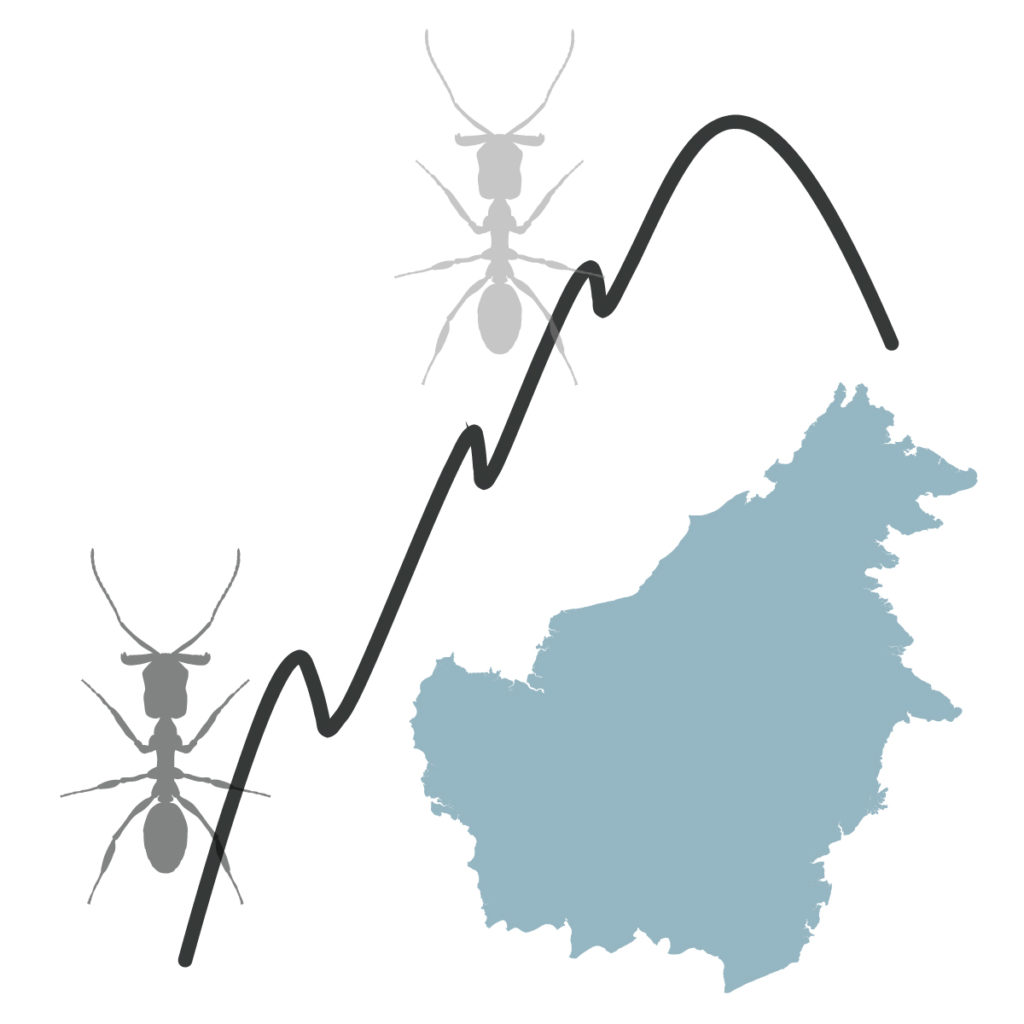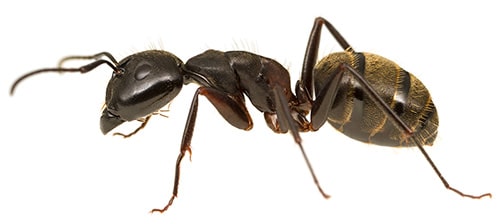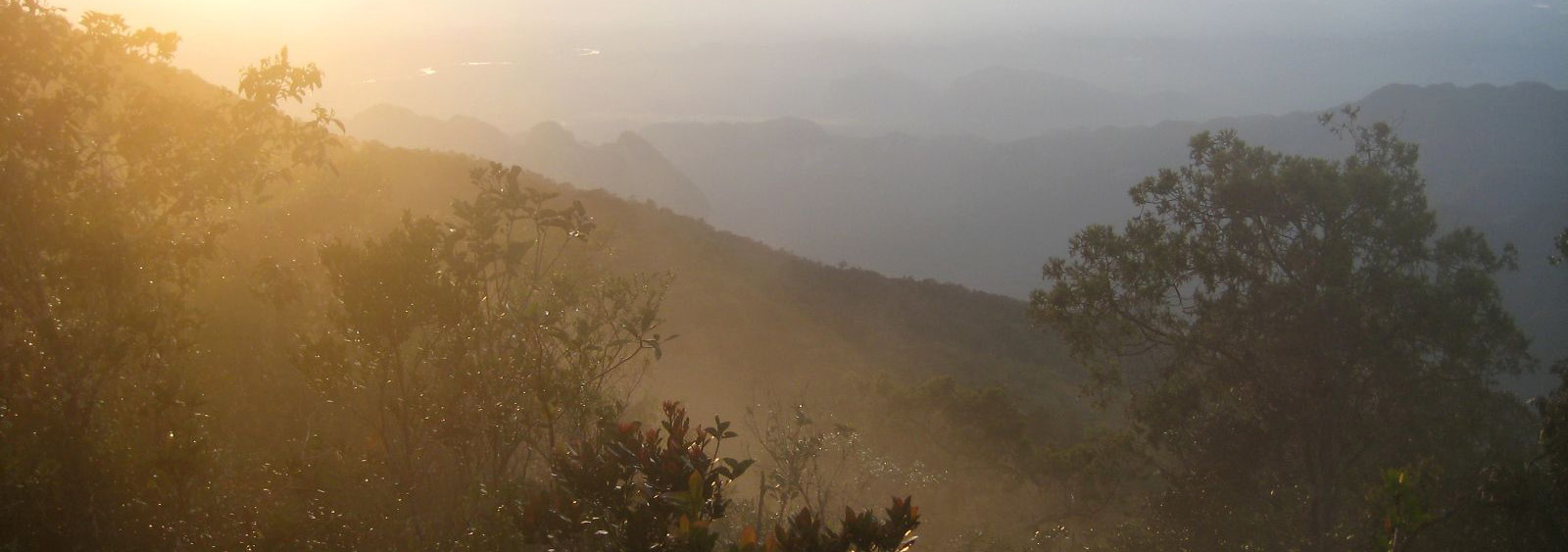
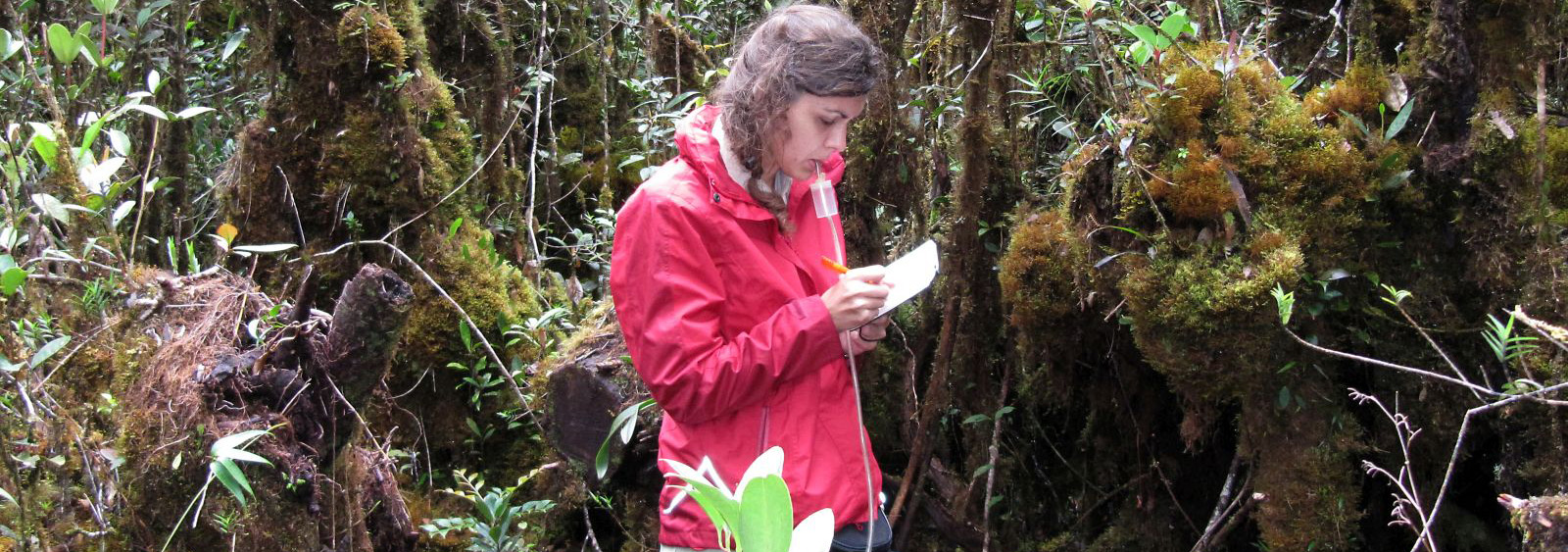
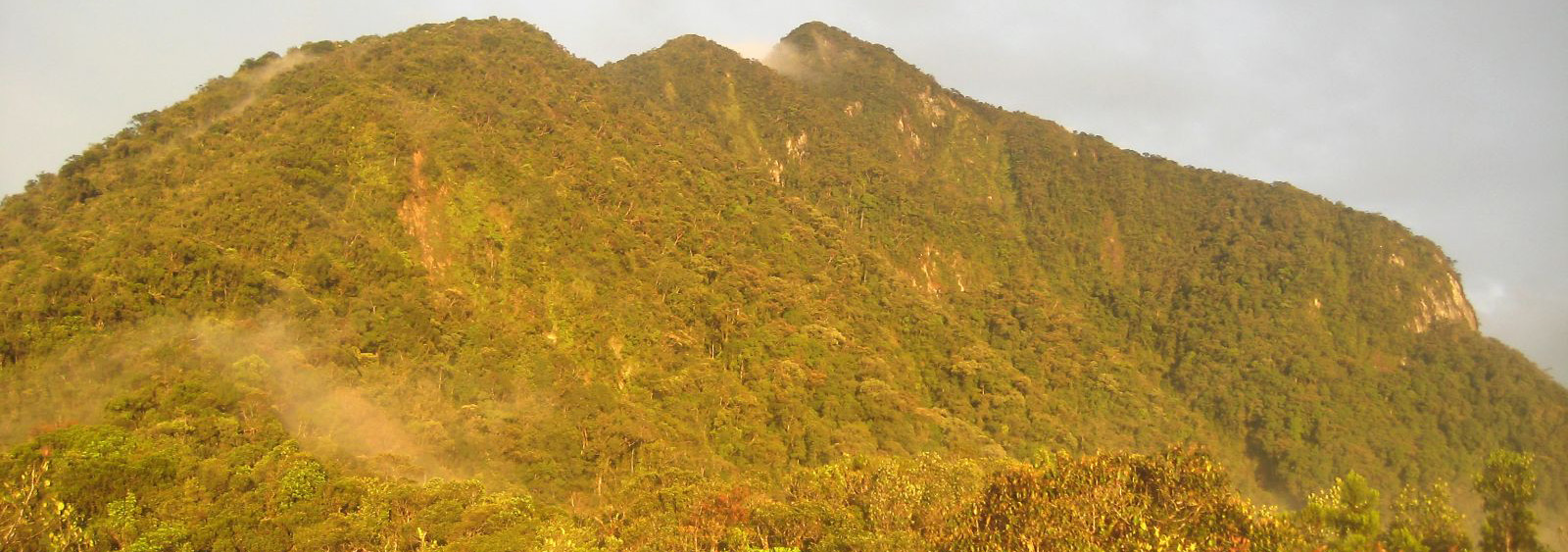
Divergence along an elevational gradient in Borneo
Elevational gradients and the divergence along them have taken an increasingly prominent role in biogeography because it is along these gradients that the effects of climate change can be most readily observed. My broad questions about these gradients include asking about what populations/colonies of a single species do differently as they move up in elevation. On the genetic level this means asking about population structure, gene flow and potential genetic divergence along these gradients.
I traveled to Sarawak (Borneo) in 2012 (funding by Lewis & Clark Fund for Exploration and Field Research) and focused on an area in Mulu National Park with two accessible mountains within close range of each other (Mt. Mulu: 2,376 m & Mt Api: 1,750 m). I focused on trap-jaw ants (species Odontomachus rixosus) and used chemical, morphological and genetic tools for my work. The results show that there are several cryptic species within O. rixosus, each species with distinct morphological features and a distinct elevational range.
